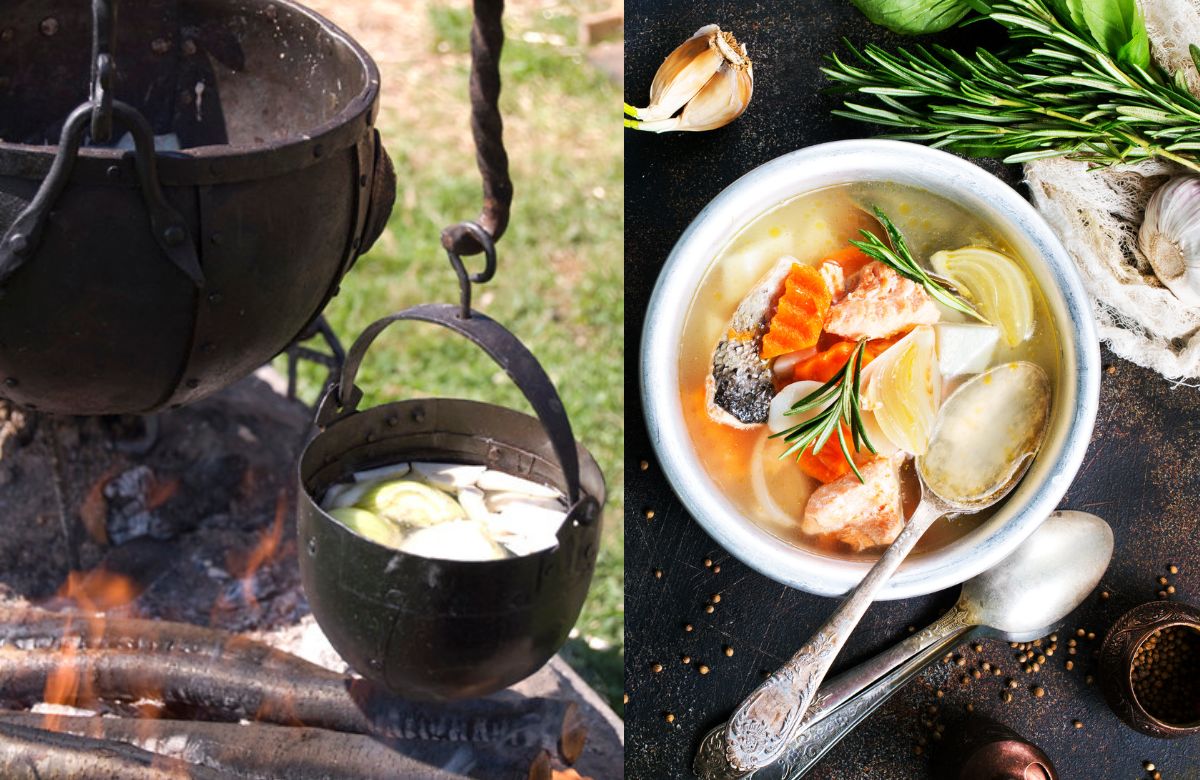While the Viking era may have passed, its culinary legacy lives on in modern Nordic cuisine. While the ingredients and techniques have evolved, the respect for local resources, sustainability, and a connection to nature remain at the heart of Nordic cooking.
Viking Cuisine – A Glimpse Into The Past
Because their food was seasonal, they might have a lot to eat at certain times of the year and very little at others. Moreover, feasting was an integral part of Viking culture. These gatherings were marked by the consumption of large quantities of food, mead, and ale. The most revered dishes included roasted meats, fish, and flatbreads. Feasting not only served as a social event but also showcased the prosperity of a chieftain or community.
During that time, people concentrated on creating simple, feel-good dishes that could be easily shared and kept warm in Scandinavia’s severe climate. The winter would have been bitterly chilly. Individuals working in those conditions would most likely require a hot meal, a fulfilling hot and pleasant supper.
This proof comes from a variety of sources. Archaeological dig sites in Scandinavia and other parts of Europe where the Vikings visited often dug up fossilised remnants of animal and fish bones, as well as plants and grain seeds. Discoveries of Viking-era cooking equipment and utensils, as well as ruins, provide evidence about how food was produced and stored.
Modern Nordic Cuisine – A Culinary Revival
Several elements of traditional Viking food have been reimagined and integrated into contemporary dishes. The abundance of fish and seafood still influences modern Nordic cuisine. Dishes like gravlax (cured salmon) and pickled herring are beloved classics. Fermentation, smoking, and pickling are used to create unique flavours and textures in dishes.
Just as Vikings relied on what the land and sea provided, modern Nordic chefs emphasised local and seasonal ingredients. Foraging for wild herbs and berries is a cherished tradition. In the 21st century, Nordic food culture represents a harmonious blend of ancient traditions and contemporary creativity.
There is a growing interest in ordinary meals from the Viking Age and other historical eras because people are becoming more interested in learning how people lived day-to-day, and what this reveals about their lives, traditions, and civilizations. While the ingredients and techniques have evolved, the respect for local resources, sustainability, and a connection to nature remain at the heart of Nordic cooking.
Cover image credits: Canva
For more such snackable content, interesting discoveries and the latest updates on food, travel and experiences in your city, download the Curly Tales App. Download HERE.
Good news! We are on WhatsApp! Subscribe to Curly Tales WhatsApp Channel to stay up-to-date with exclusive content and BTS. Join HERE.

